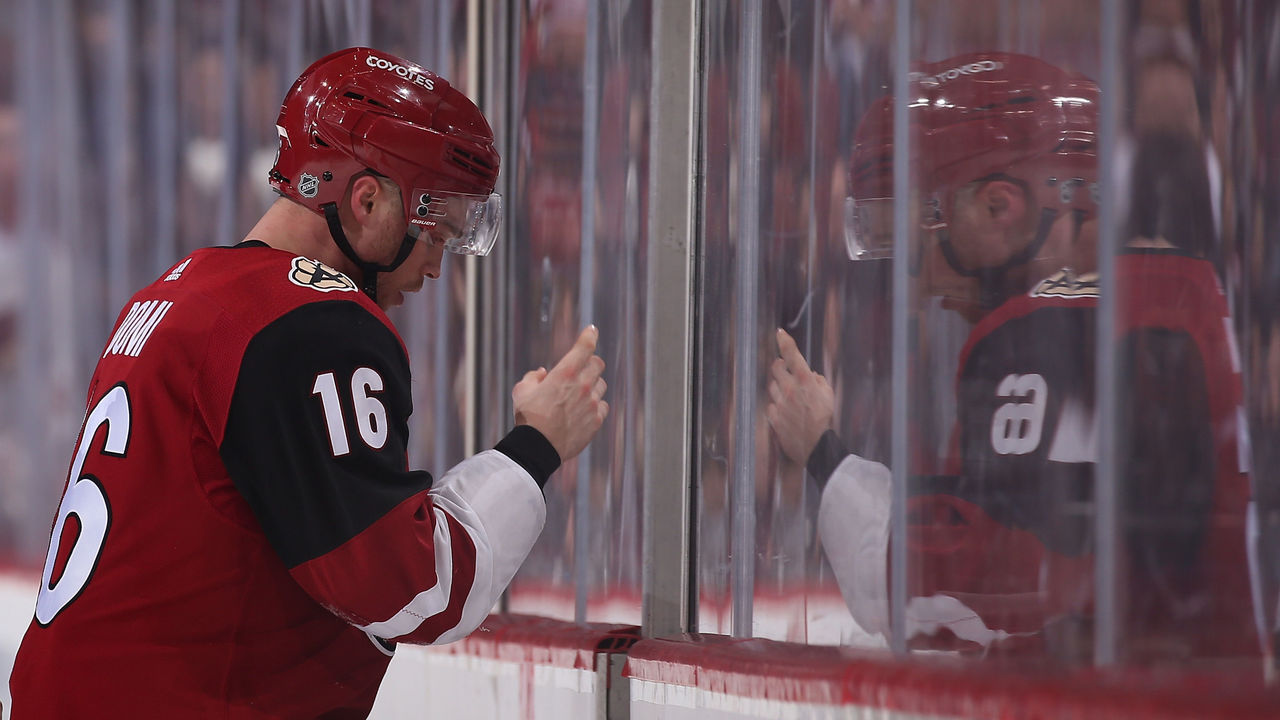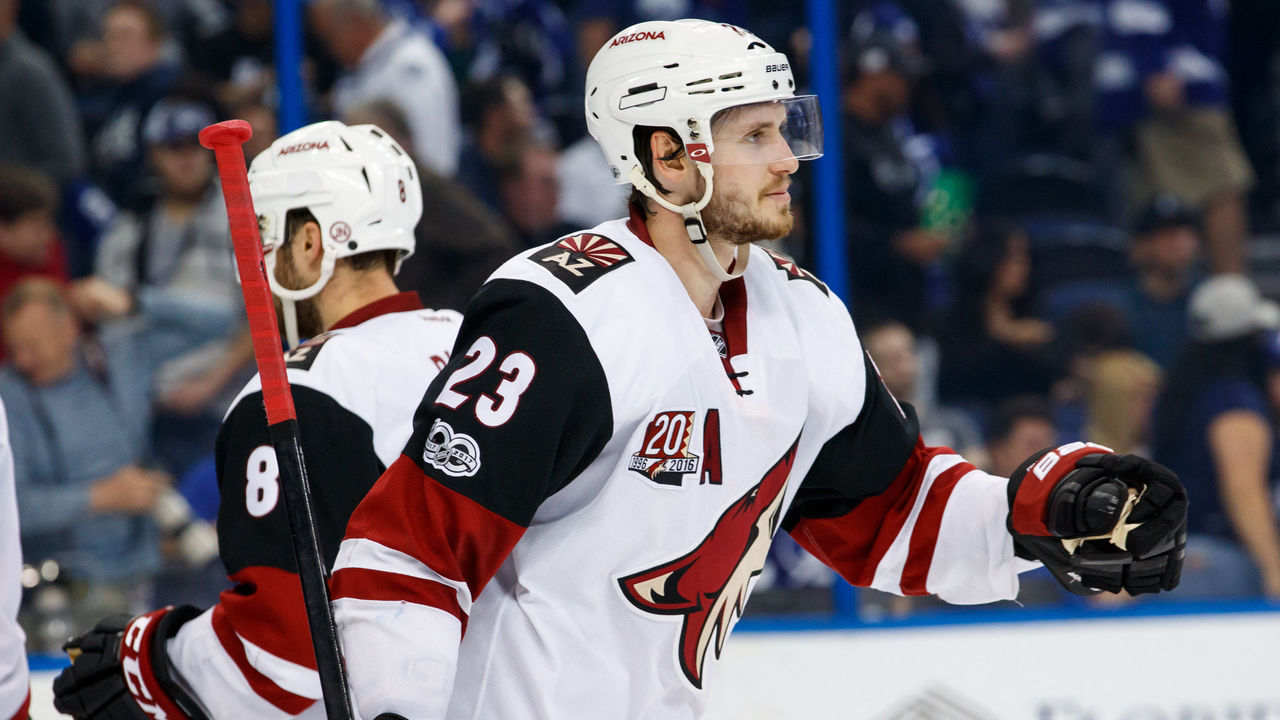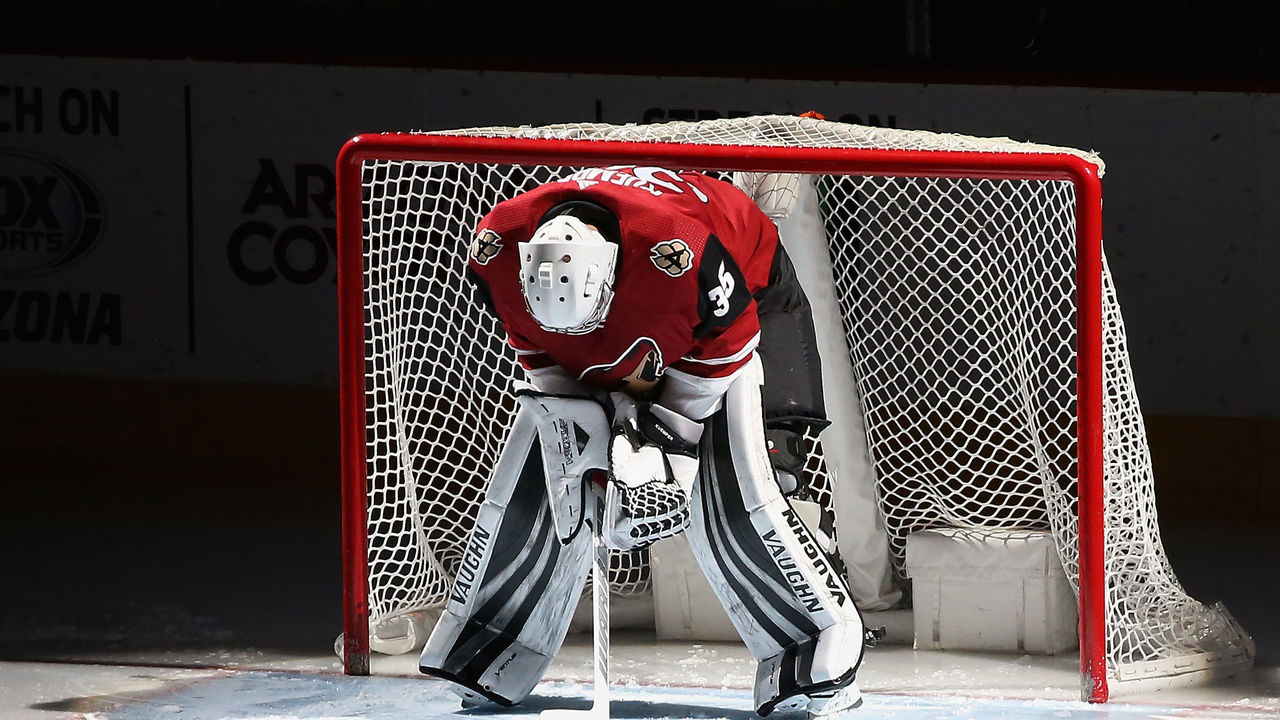Better Luck Next Year: Arizona Coyotes edition
As NHL teams are officially eliminated from Stanley Cup contention, theScore National Sports Editor James Bisson takes a look back at the highs and lows of their season, along with the biggest questions ahead of 2018-19. The first edition focuses on the Arizona Coyotes.
The Good

Clayton Keller's arrival. The seventh overall pick in the 2016 draft arrived on the NHL scene in a major way, recording 15 points in 13 October games - tops among rookies for the month. And while he wasn't able to maintain that breakneck scoring pace, he's proven to be his team's most consistent offensive options, leading the way with 19 goals and 50 points through 69 games while adding three game-winners.
Keller doesn't turn 20 until July and, while the Chesterfield, Mo., native is on the small side at 5-foot-10 and 175 pounds, the modern NHL is built for speedy players like him. There's clearly plenty of growing to do - both on and off the ice - but it's clear the Coyotes have likely landed a future star.
Antti Raanta's resurgence. Give full credit to Coyotes general manager John Chayka (more on him later) for recognizing an opportunity to improve his team immediately rather than continuing to rely on high draft picks. And while the acquisitions of Raanta and center Derek Stepan from the New York Rangers last June hasn't exactly moved the needle this season, it does position the Coyotes to be better in the seasons to come - thanks mostly to Raanta.
After failing to find a foothold in Chicago and New York despite playing well in both stints - and struggling in his initial arrival in the desert - Raanta has emerged as one of the Western Conference's most reliable goaltenders, boasting a 2.43 goals-against average and a .924 save percentage through Wednesday's games. The Coyotes will need to re-sign Raanta, who's set for unrestricted free agency July 1. There's a decent chance they'll do just that.
A very happy anniversary. The Coyotes celebrated the 3,000th game in franchise history in style, waxing the Chicago Blackhawks 6-1 on Feb. 12 to equal their biggest margin of victory of the season. It was their best offensive output of 2017-18, and marked just their second six-goal effort in the past 189 regular-season games.
Forward Max Domi might have been the happiest guy on the ice; not only did he get to be on the right side of a rout for a change, but his goal 1:32 into the game snapped a 21-game goalless streak dating back to mid-December. "Winning's fun, so it was just a lot of fun out there," Domi told reporters afterward. "Everyone was contributing and everyone wanted to be a part of it. No one let up."

Chayka's shake-up. He won't win Executive of the Year, but Chayka made a flurry of moves this season, most of which improved his team both for now and in the future. The price for Stepan and Raanta was a steep one - especially when you consider that he continued to tinker with his goaltender roster - but in doing so, he landed a solid netminder and a No. 1 center.
Acquiring Niklas Hjalmarsson and Jason Demers prior to the season helped shore up a leaky defense that remains among the league's worst, but has improved over last season; Arizona allowed the third-fewest goals against in February, and has given up the fourth-fewest overall since the All-Star break. Give Chayka a solid B for his moves this season, which is progress.
Another high pick is coming. Barring another deal like the one that netted them Raanta and Stepan prior to last year's draft, the Coyotes will have one of the earliest picks this June. And while a handful of prospects have stood out to scouting departments this season, one name is of particular interest: Swedish defenseman Rasmus Dahlin.
Would the Coyotes favor Dahlin over the top forward prospect, Barrie Colts winger Andrei Svechnikov? Perhaps; while Svechnikov would help address Arizona's goal deficiency issues, Dahlin is clearly the draft's top prospect - and acquiring him would either give Arizona yet another solid blue-liner, or would allow the Coyotes to deal Oliver Ekman-Larsson for a haul. Whatever route Chayka takes, it's a great problem to have.
The Bad

Another scoring shortage. The Coyotes haven't had a 30-goal scorer since 2011-12 - and that streak is in no danger of being halted this season. In fact, Arizona has just two players - Keller and winger Brendan Perlini - on pace to score 20 goals. Simply put, this team can't score enough goals - and no amount of improvement on defense and in goal will mask that.
This is where Arizona will need to make significant inroads beginning next season. Saddled with the league's second-worst offense (2.4 goals per game) and the No. 26 power play (16.9 percent), Chayka has his work cut out for him - which is why he might want to consider either dangling his draft pick as trade bait, or sending OEL packing if he does wind up with Dahlin.
Behind from the start. It's one thing for a team to open the season with two or three losses in a row (a development that makes even the most optimistic NHL fan want to pull his or her hair out.) It's another to kick off the campaign with losses in 11 consecutive games - which is exactly what happened to the 2017-18 version of the Coyotes. And yes, it gets worse.
Arizona went on to win just two of its next nine games - giving it two victories through 20 contests. And both of those wins came in extra time; Arizona didn't earn its first regulation triumph of the season until Nov. 16, when it knocked off the Canadiens in Montreal. Essentially, the Coyotes' playoff chances were toast by the one-quarter point of the season. Brutal.
The fall of Anthony Duclair. Given the Coyotes' annual struggle to produce offense, you can imagine their delight when Duclair - acquired from the New York Rangers in a blockbuster March 2015 deal - put together a 20-goal season as a rookie. But the sheen quickly came off the following season, as Duclair managed just five goals and 15 points in 58 games.
On his way to another disappointing offensive campaign, Duclair requested a trade in January - and was promptly granted his wish, as he was shipped to the Blackhawks in a four-player deal that sent Richard Panik to Arizona. And while Duclair has yet to rediscover his offensive form, that's of little consolation to Coyotes fans who thought they had a keeper.

Bad Max. As disappointing as it was to see Duclair go from highly touted prospect to nondescript trade piece, Domi's struggles have been even more alarming. The 23-year-old center has just five goals and 31 points in 69 games games, two years removed from an 18-goal, 52-point rookie season that had Arizona fans dreaming of a homegrown No. 1 center.
Granted, Domi has almost certainly suffered from some bad puck luck this season; his shooting percentage of 3.9 is well below his 11.5 percent rate as a rookie and his 8.3 percent rate from last season. But with just 14 goals in 128 games over the past two seasons, it's clear Domi is nowhere near the polished offensive gem the Coyotes thought they had two years ago.
More fan indifference. There are a multitude of reasons why the Coyotes aren't drawing anywhere near the top NHL teams - but it's still noteworthy that the team can't pull in more than 75 percent of capacity. Winning is the best remedy for poor attendance, but you can't help but wonder if this is just how it's going to be for hockey in the desert.
The Questions

What happens to Ekman-Larsson? Chayka wasn't about to give away his No. 1 blue-liner at the trade deadline, reportedly asking for two solid roster players and a high draft pick. It's been a dismal season for the 26-year-old Swede, who has just 10 goals and 25 assists to go along with a hideous minus-34 rating through 69 games.
Will a team pay Chayka's price this summer? That seems unlikely given that Ekman-Larsson's contract expires in the summer of 2019; unless the move came along with OEL's signature on a contract extension, it's hard to envision any GM ponying up for a one-season commitment. Chayka will likely push for a trade this summer, but fans shouldn't be surprised if one doesn't emerge.
Who's coming back? Arizona is well positioned to undergo a complete roster facelift over the next two years, with eight expiring contracts this summer and another 11 in July 2019. And at this point, it's hard to believe that more than a few of these players are iron-clad candidates to return.
That said, it's fair to assume Raanta will get a look following his terrific second half; he isn't the NHL's most consistent goaltender, but he's flashed greatness under difficult circumstances in Glendale. Perlini is also looking like a core player for the Coyotes as he nears the 20-goal plateau as a rookie. But look for plenty of the veterans to have new addresses soon.

What's Plan B in goal? Despite Raanta's late-season emergence, there's no guarantee he'll return. The Coyotes acquired netminder Darcy Kuemper from Los Angeles in February; he was having a sensational season with the Kings (10-1-3, 2.10 GAA, .932 SV%, 3 SO) but has struggled in his first few games with the Coyotes,
It's possible the Coyotes are perfectly content to roll with Kuemper, who is under contract through 2020 at a $1.85-million cap hit over the next two seasons. But with Kuemper having just 126 career games under his belt, it would behoove Arizona to add experience in goal - most easily done by retaining Raanta and having Kuemper spell him 20-25 times per season.
Is an FA splash coming? As of this writing, the Coyotes have more than $15 million in cap space, and with a handful of expiring contracts in the fold, that number will grow July 1. Phoenix kept the purse strings tight last summer, adding a handful of role players but no real impact forward. Will that change this year? Given the Coyotes' offensive woes, it has to.
Notable UFA forwards as of this post include John Tavares, Rick Nash, Paul Stastny, Evander Kane, James Neal, James van Riemsdyk, and David Perron, among others. While some of those players will likely remain with their current teams, the Coyotes should be in on several others. Without an injection of top-level talent, this team isn't going to be able to score goals.
If they fix it, will fans come? Phoenix has never been a hockey hot bed, but it hasn't helped that the Coyotes have advanced past the first round just once since the franchise migrated from Winnipeg in the mid-1990s. This marks the sixth consecutive season out of the playoffs - and given how many areas of weakness exist, that drought isn't likely to end next season.
We've seen examples of non-traditional hockey markets generating significant fan interest - either temporary or sustained - with some on-ice success. Heck, even the Coyotes saw a boost of 1,500 fans per game the season following their 2012 Western Conference final appearance. There's reason for optimism here, but this team has a very, very long way to go.
(Photos courtesy: Getty Images)